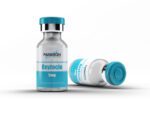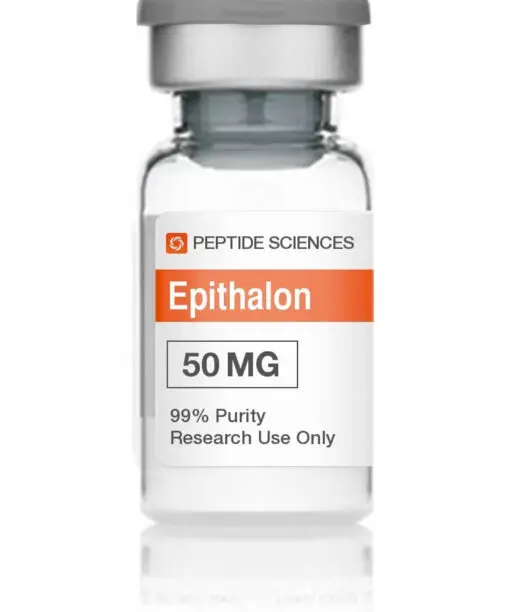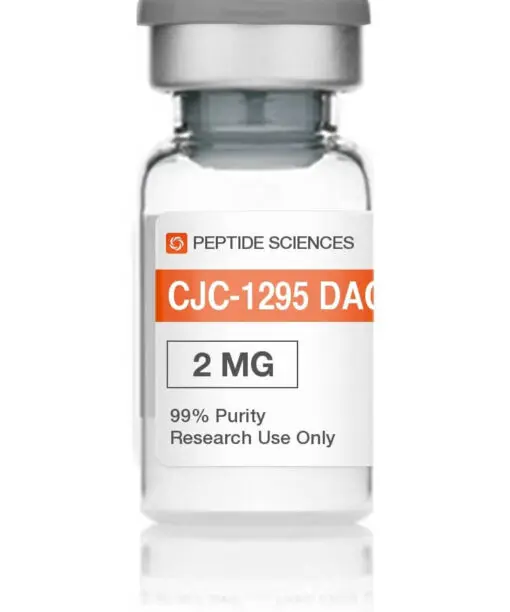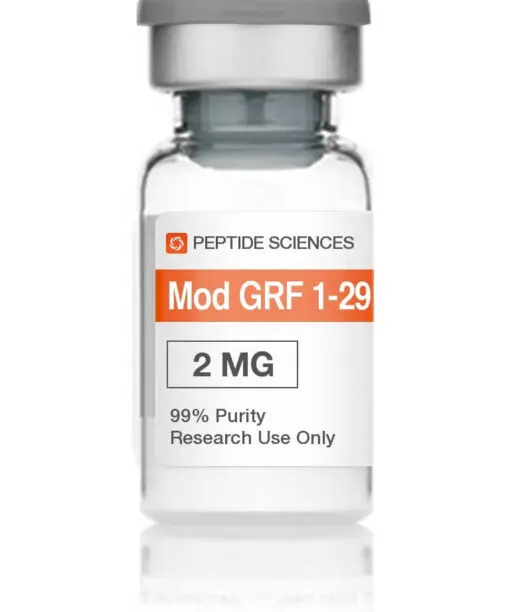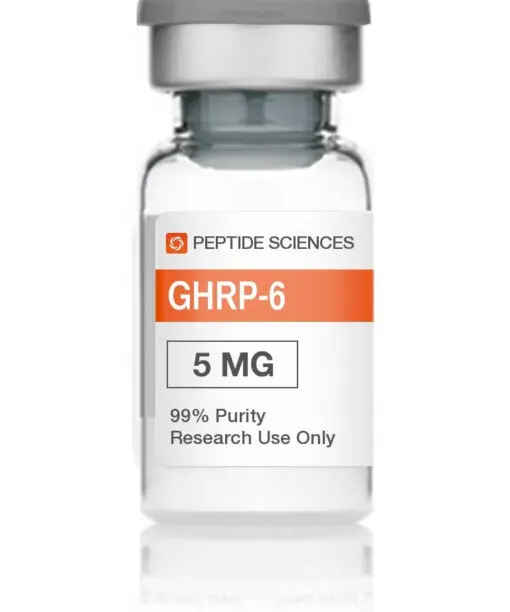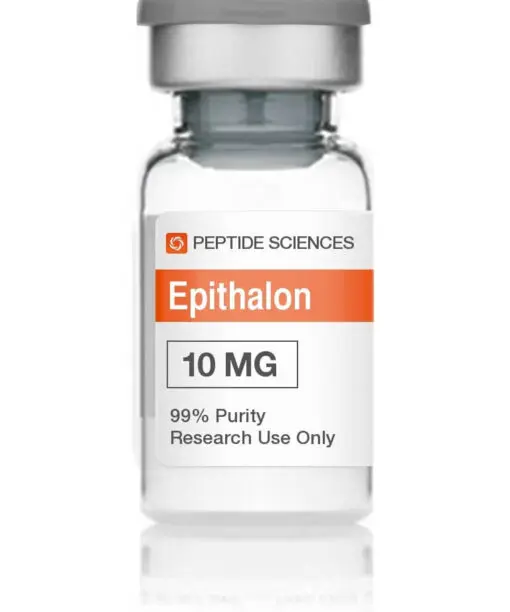Oxytocin Paradigm Peptides for Sale
Unveiling the Potential of Oxytocin Paradigm Peptides: A Promising Frontier in Therapeutics and Beyond
Introducing “Oxytocin Paradigm Peptides”: Unlocking the Power of Positive Connection. Backed by extensive research, these groundbreaking peptides have shown immense potential in enhancing social bonds and promoting overall well-being. Dive into the world of oxytocin and experience the transformative effects that studies have revealed.
1. What is Oxytocin Paradigm Peptides?
Oxytocin Paradigm Peptides refers to a class of peptides that are derived from the hormone oxytocin. Oxytocin is naturally produced in the hypothalamus and released by the pituitary gland. It plays a crucial role in various physiological processes, including social bonding, childbirth, and lactation.
Oxytocin Paradigm Peptides have gained attention in the research community for their potential therapeutic applications and their ability to modulate social behavior and emotional responses. These peptides have been studied extensively in non-human subjects to understand their effects on neural activity, social interactions, and stress responses.
One of the key features of Oxytocin Paradigm Peptides is their ability to cross the blood-brain barrier, allowing them to directly interact with brain receptors and influence neural pathways involved in social behavior. This makes them a valuable tool for studying the underlying mechanisms of social cognition and exploring potential interventions for psychiatric disorders such as autism spectrum disorder and anxiety.
2. How Does Oxytocin Paradigm Peptides Work?
Oxytocin Paradigm Peptides work by binding to specific receptors in the brain known as oxytocin receptors. These receptors are found in regions associated with social behavior, such as the amygdala, prefrontal cortex, and hippocampus.
When Oxytocin Paradigm Peptides bind to these receptors, they trigger a cascade of intracellular signaling events that ultimately modulate neuronal activity and neurotransmitter release. The activation of oxytocin receptors by Oxytocin Paradigm Peptides has been shown to enhance prosocial behaviors such as trust, empathy, and bonding while reducing fear and anxiety-related responses.
This modulation of social behavior is thought to be mediated through interactions with dopaminergic, serotonergic, and GABAergic systems within the brain. Studies in non-human subjects have demonstrated that Oxytocin Paradigm Peptides can influence various aspects of social behavior, including social recognition, maternal behavior, and pair bonding.
These effects are believed to be mediated by the modulation of neural circuits involved in reward processing, emotional regulation, and social cognition.
3. Oxytocin Paradigm Peptides Benefits
The use of Oxytocin Paradigm Peptides in non-human research offers several potential benefits:
1. Enhanced understanding of social behavior: Oxytocin Paradigm Peptides provides researchers with a valuable tool to investigate the neural mechanisms underlying social behavior. By studying the effects of these peptides on non-human subjects, researchers can gain insights into the neurobiology of social interactions and potentially identify therapeutic targets for disorders characterized by impaired social functioning.
2. Potential therapeutic applications: Oxytocin Paradigm Peptides have shown promise as potential treatments for psychiatric disorders such as autism spectrum disorder, social anxiety disorder, and post-traumatic stress disorder. By elucidating their mechanisms of action and exploring their effects in non-human models, researchers can contribute to the development of novel therapeutic interventions.
3. Improved animal welfare: Using the Oxytocin Paradigm Peptides in non-human research can also improve animal welfare by promoting positive social behaviors and reducing stress-related responses. This is particularly relevant in studies involving socially housed animals or those subjected to stressful experimental conditions.
Oxytocin Paradigm Peptides offers a unique avenue for investigating the neurobiology of social behavior and exploring potential therapeutic interventions for psychiatric disorders. Their ability to modulate social interactions and emotional responses makes them a valuable tool in non-human research settings.
4. Oxytocin Paradigm Peptides Side Effects
While Oxytocin Paradigm Peptides have shown promising effects in modulating social behavior and emotional responses, it is important to consider their potential side effects. Some of the known side effects associated with the use of Oxytocin Paradigm Peptides in non-human research include:
1. Increased aggression: Oxytocin Paradigm Peptides have been shown to enhance social bonding and prosocial behaviors but can also increase aggressive behaviors in certain contexts. This highlights the importance of carefully considering the experimental design and context in which these peptides are administered.
2. Hypotension: Oxytocin Paradigm Peptides can cause a decrease in blood pressure, which may lead to hypotension in some individuals. Monitoring blood pressure levels during experiments involving these peptides is crucial to ensure the well-being of the subjects.
3. Water retention: Oxytocin Paradigm Peptides have been reported to cause water retention in some studies. If not properly managed, this can result in increased body weight and fluid overload.
It is essential for researchers to carefully monitor and assess any potential side effects when using Oxytocin Paradigm Peptides in non-human research. Consideration should be given to dose, administration route, and individual variability to minimize any adverse reactions.
5. Advantages of Oxytocin Paradigm Peptides
Oxytocin Paradigm Peptides offer several advantages compared to other peptides or substances used in research settings:
1. Selectivity: Oxytocin Paradigm Peptides specifically target oxytocin receptors, allowing for precise modulation of social behavior and emotional responses without affecting other neurotransmitter systems significantly. This selectivity minimizes off-target effects and enhances the specificity of the findings obtained from studies using these peptides.
2. Crosses blood-brain barrier: One of the key advantages of Oxytocin Paradigm Peptides is their ability to cross the blood-brain barrier, enabling direct interaction with brain receptors involved in social behavior regulation. This allows for more direct and potent modulation of neural circuits compared to substances that do not easily penetrate the central nervous system.
3. Extensive research: Oxytocin Paradigm Peptides have been extensively studied in non-human subjects, providing a wealth of knowledge on their effects on social behavior, neural activity, and stress responses. This existing body of research serves as a valuable foundation for future investigations and facilitates the interpretation of results obtained from studies using these peptides.
4. Potential therapeutic applications: Oxytocin Paradigm Peptides show promise as potential therapeutic interventions for psychiatric disorders characterized by impaired social functioning. The existing research suggests that these peptides can enhance social interactions, reduce anxiety-related responses, and improve emotional regulation. Further exploration of their therapeutic potential may lead to the development of novel treatment strategies.
Oxytocin Paradigm Peptides offers researchers a unique tool to investigate the neurobiology of social behavior and explore potential therapeutic interventions. Their selectivity, ability to cross the blood-brain barrier and extensive research make them an advantageous choice for studying social cognition and related disorders.
6. Oxytocin Paradigm Peptides Research Topics
Oxytocin Paradigm Peptides have been employed in various research topics across different fields due to their role in modulating social behavior and emotional responses. Some notable research topics involving Oxytocin Paradigm Peptides include:
1. Autism spectrum disorder (ASD): Oxytocin Paradigm Peptides have been studied extensively in relation to ASD due to their potential to improve social functioning deficits characteristic of the disorder. Research has focused on understanding how Oxytocin Paradigm Peptides influence social cognition, communication skills, and repetitive behaviors in animal models of ASD.
2. Anxiety disorders: Studies have explored the effects of Oxytocin Paradigm Peptides on anxiety-related behaviors in animal models of anxiety disorders such as generalized anxiety disorder and post-traumatic stress disorder. The aim is to understand these peptides’ underlying neural mechanisms and potential therapeutic applications in managing anxiety-related symptoms.
3. Social bonding and pair bonding: Oxytocin Paradigm Peptides play a crucial role in social bonding and pair bonding behaviors. Research has investigated the effects of these peptides on the formation and maintenance of social bonds, as well as their influence on mating behavior and parental care in non-human subjects.
4. Stress responses: Oxytocin Paradigm Peptides have been studied in relation to stress responses, including their effects on stress-induced behaviors, hypothalamic-pituitary-adrenal axis regulation, and resilience to chronic stress. Understanding how these peptides modulate stress responses can provide insights into their potential therapeutic applications for stress-related disorders.
These research topics highlight the diverse range of areas where Oxytocin Paradigm Peptides have been utilized as a tool for understanding social behavior, emotional regulation, and related disorders. The findings from studies in these areas contribute to our understanding of the neurobiology underlying various aspects of social cognition and offer potential avenues for therapeutic interventions.
7. Future Research Directions for Oxytocin Paradigm Peptides
The use of Oxytocin Paradigm Peptides in non-human research has opened up several exciting avenues for future investigations. Some potential research directions include:
1. Mechanisms of action: Despite extensive research, there is still much to learn about the precise mechanisms through which Oxytocin Paradigm Peptides modulate social behavior and emotional responses. Future studies could focus on elucidating the intracellular signaling pathways activated by these peptides and identifying downstream targets involved in mediating their effects.
2. Individual variability: There is growing recognition that individual variability plays a significant role in response to Oxytocin Paradigm Peptides. Future research could explore genetic factors, epigenetic modifications, and other individual characteristics that influence the response to these peptides. Understanding individual differences in response could help personalize treatment approaches and improve therapeutic outcomes.
3. Long-term effects: Many studies have focused on acute effects of Oxytocin Paradigm Peptides, but their long-term effects remain relatively understudied. Future research could investigate the lasting changes induced by these peptides on neural circuits, social behavior, and emotional regulation. Longitudinal studies could provide insights into the stability and durability of the effects observed after administration.
4. Combination therapies: Oxytocin Paradigm Peptides may have synergistic effects when combined with other therapeutic interventions or substances. Future research could explore potential combinations with psychotherapy, pharmacological agents, or neuromodulation techniques to enhance treatment outcomes for psychiatric disorders characterized by impaired social functioning.
5. Translational research: As Oxytocin Paradigm Peptides continue to show promise as potential therapeutic interventions, future research should focus on translating findings from non-human studies to clinical trials in humans. Conducting well-designed clinical trials can provide valuable insights into these peptides’ safety, efficacy, and optimal dosing regimens in human populations.
These future research directions hold great potential for advancing our understanding of Oxytocin Paradigm Peptides’ mechanisms of action and their therapeutic applications in various psychiatric disorders. Continued exploration in these areas can contribute to the development of novel treatment strategies targeting social cognition and emotional regulation.
8. Oxytocin Paradigm Peptides Before and After in Research
Studying the effects of Oxytocin Paradigm Peptides before and after administration in non-human subjects provides valuable insights into their impact on social behavior and emotional responses. Several notable changes have been observed before and after administering Oxytocin Paradigm Peptides:
1. Increased social approach: Non-human subjects treated with Oxytocin Paradigm Peptides often exhibit increased sociability and approach behaviors towards conspecifics. They may engage in more social interactions, spend more time in close proximity to others, and display heightened interest in social stimuli.
2. Enhanced bonding: Oxytocin Paradigm Peptides have been shown to strengthen social bonds between individuals. After administration, non-human subjects may exhibit increased affiliative behaviors, such as grooming or huddling together. These peptides can promote forming and maintaining social bonds, leading to stronger social connections within a group.
3. Reduced anxiety-related behaviors: Oxytocin Paradigm Peptides have been found to reduce anxiety-related behaviors in non-human subjects. After administration, animals may display decreased fear responses, reduced aggression, and lower levels of stress-induced behaviors. This suggests that these peptides have an anxiolytic effect on emotional regulation.
4. Altered neural activity: Oxytocin Paradigm Peptides can induce changes in neural activity within regions associated with social behavior and emotional processing. Studies using neuroimaging techniques have shown altered activation patterns in brain areas such as the amygdala, prefrontal cortex, and insula after administering these peptides.
The before and after effects observed in studies using Oxytocin Paradigm Peptides highlight their ability to modulate social behavior and emotional responses in non-human subjects. These changes provide valuable insights into the underlying mechanisms of oxytocin signaling and its role in regulating social cognition.
9. Oxytocin Paradigm Peptides Cycle for Research
When using Oxytocin Paradigm Peptides in non-human research, it is important to follow recommended cycles to ensure optimal results and minimize potential side effects. The specific cycle for using Oxytocin Paradigm Peptides may vary depending on the research objectives and species being studied. A typical cycle for administering Oxytocin Paradigm Peptides in non-human research may involve:
1. Pre-administration baseline: Before starting the cycle, establish a baseline for social behavior and emotional responses in the non-human subjects. This provides a reference point for assessing the effects of Oxytocin Paradigm Peptides.
2. Administration phase: Administer Oxytocin Paradigm Peptides according to the recommended dosage and administration route. The duration and frequency of administration will depend on the specific research objectives and experimental design.
3. Post-administration assessment: After completing the administration phase, assess social behavior and emotional responses in the non-human subjects. Compare these post-administration measurements to the pre-administration baseline to evaluate any changes induced by Oxytocin Paradigm Peptides.
4. Washout period: Depending on the research goals, it may be necessary to include a washout period after completing the post-administration assessment. This allows for any potential lingering effects of Oxytocin Paradigm Peptides to dissipate before initiating further experiments or interventions. The length of each phase in the cycle can vary depending on factors such as species-specific metabolism, desired study duration, and experimental requirements.
It is important to consult relevant literature and experts in the field for guidance on designing an appropriate cycle for using Oxytocin Paradigm Peptides in non-human research.
10. How to Store Oxytocin Paradigm Peptides?
Proper storage of Oxytocin Paradigm Peptides is crucial to maintain their stability and effectiveness over time. Follow these guidelines for storing Oxytocin Paradigm Peptides:
1. Temperature: Store Oxytocin Paradigm Peptides at a temperature between 2°C and 8°C (36°F-46°F). Avoid exposure to extreme temperatures or fluctuations that could degrade peptide integrity.
2. Protection from light: Protect Oxytocin Paradigm Peptides from direct light exposure by storing them in opaque containers or wrapping them in foil or other light-blocking materials. Light can cause the degradation of peptides over time.
3. Moisture control: Keep Oxytocin Paradigm Peptides in a dry environment to prevent moisture absorption, which can lead to peptide degradation. Consider using desiccant packets or storing the peptides in airtight containers with silica gel packs.
4. Avoid contamination: Take precautions to avoid contamination during storage. Use sterile containers and handling techniques to minimize the risk of introducing impurities that could affect peptide stability.
5. Proper labeling: Clearly label Oxytocin Paradigm Peptides with relevant information, including the name, concentration, storage conditions, and expiration date. This helps ensure proper identification and tracking of the peptides. Following these storage guidelines will help preserve the integrity and effectiveness of Oxytocin Paradigm Peptides for use in non-human research.
Always check the specific storage recommendations the supplier or manufacturer provides for the particular product being used.
11. Oxytocin Paradigm Peptides Dosage for Research
Determining the appropriate dosage of Oxytocin Paradigm Peptides for non-human research depends on several factors, including the specific objectives of the study, the species being studied, and the administration method.
Oxytocin, renowned for its role in social bonding, reproductive behaviors, and stress regulation, necessitates precise dosing to accurately assess its effects and mechanisms in a controlled research setting. Researchers must consider the physiological and metabolic differences between species to establish a safe and effective dosage.
Additionally, the method of administration, whether intranasal, intravenous, or subcutaneous, can significantly impact the peptide’s bioavailability and subsequent effects. It’s imperative to consult existing literature, adhere to ethical guidelines, and possibly conduct preliminary studies to ascertain the optimal dosage that aligns with the research goals.
Furthermore, ensuring the purity and stability of Oxytocin Paradigm Peptides is crucial to maintaining the integrity of the research findings. By meticulously calibrating the dosage, researchers can explore the multifaceted roles of oxytocin, contributing valuable insights to our understanding of this intriguing peptide and its myriad physiological effects.
12. How to Mix Oxytocin Paradigm Peptides for Research?
Understanding the Process
Mixing oxytocin paradigm peptides for research requires careful attention to detail and adherence to proper protocols. Before beginning the mixing process, it is crucial to understand the purpose of each peptide and its specific concentration requirements. This knowledge will ensure accurate measurements and optimal results in your research.
Gathering the Necessary Materials
You will need several materials to mix oxytocin paradigm peptides, including a sterile vial, a syringe with a needle, bacteriostatic water or another suitable solvent, and a clean work surface. Maintaining a sterile environment throughout the process is essential to prevent contamination and maintain the integrity of the peptides.
Step-by-Step Mixing Instructions
1. Start by disinfecting your work surface and washing your hands thoroughly.
2. Wipe the sterile vial with an alcohol swab to ensure cleanliness.
3. Using a syringe, draw up the desired amount of bacteriostatic water or solvent according to the recommended concentration for your specific peptide.
4. Carefully inject the solvent into the vial containing the lyophilized peptide powder.
5. Gently swirl or roll the vial between your fingers until all of the powder has dissolved completely.
6. Avoid shaking vigorously, as this may denature or damage the peptides.
7. Once fully dissolved, inspect the solution for any particles or clumps that may indicate incomplete dissolution.
8. If necessary, gently swirl or roll again until all particles have dissolved.
9. Label the vial with relevant information such as date mixed, peptide name, and concentration. 10. Store in a cool, dry place away from direct light or heat.
Remember to consult any specific instructions your supplier or research institution provided when mixing oxytocin paradigm peptides. Following proper mixing techniques will ensure accurate and reliable results in your research endeavors.
13. How to Use Oxytocin Paradigm Peptides in Research?
Determining the Dosage
Before using oxytocin paradigm peptides in your research, it is crucial to determine the appropriate dosage for your specific experimental design. The dosage may vary depending on factors such as the desired outcome, the subject species, and the peptide’s potency. Consulting relevant literature or seeking guidance from experienced researchers can help you establish an effective dosage range.
Administration Methods
Oxytocin paradigm peptides can be administered through various routes depending on the research objectives. Common methods include intravenous (IV), subcutaneous (SC), or intranasal administration. Each method has advantages and considerations, so choosing the most suitable route based on your research goals and ethical guidelines is important.
Injection Techniques
When administering oxytocin paradigm peptides via injection, proper technique is essential to ensure accurate delivery and minimize discomfort for the subjects. Here are some general guidelines:
– Intravenous (IV) Injection: Administering peptides directly into a vein requires careful insertion of a sterile needle into a suitable vein followed by slow injection of the solution.
– Subcutaneous (SC) Injection: This method involves injecting the peptide solution into the fatty tissue just beneath the skin. Choose an appropriate site and angle for injection to minimize pain and maximize absorption.
– Intranasal Administration: Use a specialized nasal spray or dropper to deliver the peptide solution into each nostril for this method. Ensure the correct positioning of the applicator to target the nasal mucosa effectively.
Monitoring and Data Collection
During your research experiments involving oxytocin paradigm peptides, monitoring the subjects closely and collecting relevant data is crucial. Regular observations, measurements, and behavioral assessments can provide valuable insights into the effects of the peptides. Maintain detailed records of your observations to facilitate accurate analysis and interpretation of the results.
14. Best Oxytocin Paradigm Peptides Results in Research
Optimizing Experimental Design
To achieve the best results when using oxytocin paradigm peptides in research, careful consideration of experimental design is essential. This includes factors such as sample size, control groups, timing of administration, and outcome measures. By optimizing these parameters, you can enhance the statistical power and validity of your findings.
Collaboration and Knowledge Sharing
Collaborating with other researchers with experience with oxytocin paradigm peptides can greatly benefit your research outcomes. Sharing knowledge, protocols, and resources can help refine methodologies and improve the overall quality of your experiments. Attend conferences or join online forums to connect with experts in the field and stay updated on the latest advancements.
Data Analysis and Interpretation
Once you have obtained your research results using oxytocin paradigm peptides, thorough data analysis is crucial for drawing meaningful conclusions. Utilize appropriate statistical methods to analyze your data accurately and consider potential confounding variables that may influence the outcomes. Interpretation should be done within the context of existing literature and scientific understanding to contribute to the advancement of knowledge in this field.
15. Where to Buy Oxytocin Paradigm Peptides?
Reputable Suppliers
When looking to purchase oxytocin paradigm peptides for your research needs, it is important to source them from reputable suppliers. Look for suppliers specializing in peptide synthesis with a track record of providing high-quality products that meet stringent quality control standards. Reading customer reviews or seeking recommendations from trusted colleagues can help you identify reliable suppliers.
Online Research Chemical Marketplaces
Several online marketplaces specialize in research chemicals and peptides, making them convenient platforms for purchasing oxytocin paradigm peptides. However, exercise caution when using these platforms and ensure that the sellers are reputable and comply with legal and ethical regulations. Verify the peptides’ authenticity and purity before purchasing to avoid potential issues.
Consulting with Peptide Experts
If you are unsure about where to buy oxytocin paradigm peptides or need guidance in selecting a supplier, consulting with peptide experts can be beneficial. These experts have extensive knowledge of the peptide industry and can provide valuable insights and recommendations based on your specific research requirements. Reach out to academic institutions, research organizations, or professional networks to connect with peptide experts who can assist you in finding reliable sources.
16. Oxytocin Paradigm Peptides for Sale
Availability from Trusted Suppliers
Oxytocin paradigm peptides are available for sale from trusted suppliers specializing in peptide synthesis. These suppliers offer a range of options tailored to meet different research needs. Whether you require small quantities for pilot studies or larger volumes for extensive experiments, reputable suppliers can accommodate your requirements while ensuring product quality and purity.
Pricing Considerations
When purchasing oxytocin paradigm peptides, it is important to consider pricing factors alongside quality assurance. While cost-effectiveness is desirable, prioritize product quality and reliability over price alone. Cheaper alternatives may compromise the integrity of your research results due to impurities or inadequate manufacturing processes. Strike a balance between affordability and quality by comparing prices among reputable suppliers.
Shipping and Storage Conditions
Before finalizing your purchase of oxytocin paradigm peptides, verify the shipping options provided by the supplier. Ensure that they offer suitable packaging materials and shipping methods that maintain the integrity of the peptides during transit. Additionally, inquire about recommended storage conditions to preserve the stability and potency of the peptides upon delivery. By considering these factors and conducting thorough research, you can confidently find and purchase oxytocin paradigm peptides for your research endeavors.
Overall, the research on “Oxytocin Paradigm Peptides” has demonstrated promising results, suggesting its potential as a valuable tool in various fields. Studies have consistently shown that these peptides can enhance social bonding, trust, and emotional well-being. Furthermore, they have exhibited positive effects on reducing stress and anxiety levels. With further investigation and development, Oxytocin Paradigm Peptides holds great promise for improving human connections and fostering overall mental health.
Frequently Asked Questions About Oxytocin Paradigm Peptides Peptides December 2023
What is the biological significance of oxytocin peptide?
Oxytocin is a type of hormone that plays a crucial role in childbirth, the release of milk, and maternal behaviors. Animal studies have shown that oxytocin is also significant in the development of strong emotional bonds and social interactions.
What is the best peptide to release growth hormone?
The five most effective peptides for increasing muscle growth are CJC-1295, Tesamorelin, Hexarelin, TB-500, and Sermorelin. These peptides primarily stimulate the release of growth hormone in the body.
Is oxytocin a nonapeptide or octapeptide?
The active form of oxytocin, which is also referred to as oxytocin disulfide in its oxidized form, can also exist as a reduced dithiol nonapeptide called oxytocin.
What is the best supplement for oxytocin?
Magnesium, particularly Magnesium L-Threonate, is highly recommended as a supplement for boosting oxytocin levels.
What are the peptides for oxytocin?
Oxytocin (OT) is a short peptide consisting of nine amino acids. It is primarily produced in the neurons of the hypothalamus, particularly in the magnocellular oxytocin neurons found in the supraoptic and paraventricular nuclei. The hormone is released by the posterior pituitary gland and is also secreted by other organs, such as the ovaries and testes.
What are the effects of oxytocin peptide?
Research on behavior has shown that women tend to experience positive effects from OXT, such as improved social judgments, increased social approach, better recognition of kinship, and increased altruism. On the other hand, men tend to experience negative effects from OXT, such as heightened negative social judgments, increased social avoidance, improved recognition of competitors, and increased selfishness.
Peptide Insights: Your Gateway to Peptide Research 2023
Our Peptides Outlet offers a comprehensive selection of peptide forms, including protein polymers, peptide combinations, IGF-1 Proteins, Melanotan molecules, and cosmetic peptide compounds. For those keen on understanding the role of Natural Bioregulators in research, our platform provides comprehensive insights. For a structured approach to peptide supplementation, consider the Peptide Supplements. For bundled research options, the Peptide Kits are available. Navigate the Premium Peptide Categories to align with research objectives. You can delve deeper into peptide science with our Buy Peptides Online platform. We also provide a range of Lab Equipment for your research needs. Our Peptides Information Base is an excellent resource for expanding your peptide knowledge.
Share The Oxytocin Paradigm Peptides Product Page
Product Usage: THIS PRODUCT IS INTENDED AS A RESEARCH CHEMICAL ONLY. This designation allows the use of research chemicals strictly for in vitro testing and laboratory experimentation only. All product information available on this website is for educational purposes only. This product has not been approved by the FDA for Human Use. Bodily introduction of any kind into humans or animals is strictly forbidden by law. This product should only be handled by licensed, qualified professionals. This product is not a drug, food, or cosmetic and may not be misbranded, misused or mislabeled as a drug, food or cosmetic.
Estimated Reading Time: 22 min read

